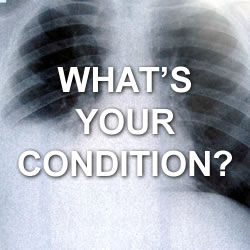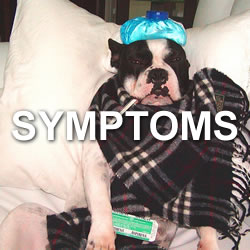Hantavirus
The single biggest threat to man’s continued dominance on this planet is the virus - Joshua Lederberg, Nobel Prize-winning biologist
.jpg)
image by: Leopoldo Della Ciana
HWN Recommends
The Hanta Virus
The Hanta Virus doesn't get a whole lot of respect these days as bioterror threats have attracted most people's attentions to the "designer diseases" such as Anthrax, Ebola and Smallpox...
The most diabolical thing about the Hanta Virus is that when you contract it at first it just feels like you have the flu, and then you feel better, then you die. You don't even see it coming. You're just going along, telling everyone you're going to pull through and then all of a sudden fluid seeps into your lungs and it's Respiratory Failure City. It's like the viral equivelant of being blindsided by a bus right after you've been released from the hospital.
Hanta Virus is transmitted through…
Resources
 Here's The Virus That People Are Catching From Their Pet Rats
Here's The Virus That People Are Catching From Their Pet Rats
Hantavirus has a variety of mice and rats as its host. Although the animals may be asymptomatic, they still shed the virus in their secretions—urine, droppings, and saliva. First, someone needs to think of the disease, which is not likely to happen without a detailed history of exposures. Then diagnosis is made by special blood tests looking for antibodies to infection,
 How hantaviruses infect lung cells
How hantaviruses infect lung cells
Hantaviruses cause severe and sometimes fatal respiratory infections, but how they infect lung cells has been a mystery. Researchers report that hantaviruses gain entry to lung cells by 'unlocking' a cell-surface receptor called protocadherin-1 (PCDH1). Deleting this receptor made lab animals highly resistant to infection. The findings show that targeting PCDH1 could be a useful strategy against deadly hantavirus pulmonary syndrome.
Hantavirus: Be Careful, Not Fearful
The virus does not fare well in sunlight, but survives well in dark, musty environments, which may include seldom-used cabins that have not recently been aired out or cleaned.
Rodent Riddles: Why Hantavirus Is So Deadly
It's unlikely you'll catch the hantavirus from drinking soda from a can or riding the New York subway, as some urban myths warn. But the deadly virus can still crop up in some innocent-seeming places. Breathing in airborne excrement from some types of rats and mice—often unknowingly swept into the air by people cleaning out remote cabins or camping in the mountains—can cause infection from hantavirus. That, in turn, can lead to a rare but serious illness called hantavirus pulmonary syndrome, or HPS.
What Animals Are Most Likely To Make You Sick?
Despite hantavirus in Yosemite, the barnyard is more dangerous than the national park.
Dying Trees Make Way for Mice With Deadly Disease
The deer mouse Peromyscus maniculatus looks ironically cute in pictures at meeting presentations, but the Centers for Disease Control and Prevention ranks it as the main rodent reservoir for sin nombre virus. Infected deer mice don't show many symptoms, but people inhaling virus wafting from mouse urine or saliva can get quite sick with hantavirus pulmonary syndrome.
Hantavirus Information: All About This Mouse-Borne Virus!
Hantaviruses that cause HPS are carried by rodents, especially the deer mouse. You can become infected by exposure to their droppings, and the flu-like first signs of sickness (especially fever and muscle aches) appear one to six weeks later, followed by shortness of breath and coughing. Once this phase begins, the disease progresses rapidly, necessitating hospitalization and often ventilation within 24 hours. Prevention is the best strategy, and it simply means taking some very practical steps to minimize your contact with rodents. HPS is not contagious from person-to-person in the United States
Hantaviruses
In 1978, the etiologic agent of Korean Hemerologic fever was isolated from small infected field rodent Apodemus agrarius near Hantan river in South Korea. The virus was named as Hantaan virus, after the name of the river Hantan. This initial discovery dates back to scientific approaches that were initiated after the Korean war (1951-1953), during which more than 3000 cases of Korean hemorrhagic fever were reported among UN troops.
Here's How Much Mouse Poop The FDA Allows In Your Food
You've probably eaten mouse poop -- and the federal government is just fine with that. It's also fine with mold, rat hairs and insect legs.
How about this disease-infested rat weather we're having?
The rats and mice that populate our sewers, barns, dumps, and alleys carry all kinds of microbes that can sicken people. Our rodent neighbors have been implicated in outbreaks of infections ranging from plague to hantavirus.
Tips on avoiding hantavirus
Any activity that puts people in contact with rodent droppings, urine, saliva, or nesting materials can place you at risk for infection. Hantavirus is spread when virus-containing particles from rodent urine, droppings, or saliva are stirred into the air. It is important to avoid actions that raise dust, such as sweeping or vacuuming. Infection occurs when virus particles are breathed in.
What Caused the Yosemite Hantavirus Outbreak?
With the Yosemite tourists having died from this normally high-altitude illness, we spoke with an infectious disease expert to see if hantavirus could spread to other areas of the country.
 The Hanta Virus
The Hanta Virus
The Hanta Virus doesn't get a whole lot of respect these days as bioterror threats have attracted most people's attentions to the "designer diseases" such as Anthrax, Ebola and Smallpox, but this week I've decided to recognize the Hanta Virus as one of the most badassed of all viral infections. The most diabolical thing about the Hanta Virus is that when you contract it at first it just feels like you have the flu, and then you feel better, then you die. You don't even see it coming.
11 die from rodent-borne virus: What is hantavirus pulmonary syndrome?
The Centers for Disease Control and Prevention notes that early symptoms of HPS include fever and muscle aches, especially in the thighs, hips, back and shoulders and general fatigue. Approximately half of all patients will experience abdominal pain, nausea, vomiting, dizziness and diarrhea. Four to 10 days after the initial illness appears, patients experience coughing, shortness of breath and lungs fill with fluid.
CDC
Infection with hantavirus can progress to Hantavirus Pulmonary Syndrome (HPS), which can be fatal. People become infected through contact with hantavirus-infected rodents or their urine and droppings. The Sin Nombre hantavirus, first recognized in 1993, is one of several New World hantaviruses circulating in the US. Old World hantaviruses, found in Asia, can cause Hemorrhagic Fever with Renal Syndrome (HFRS). Rodent control in and around the home remains the primary strategy for preventing hantavirus infection.
MayoClinic
Hantavirus pulmonary syndrome is an infectious disease characterized by flu-like symptoms that can progress rapidly to potentially life-threatening breathing problems. Several types of hantaviruses can cause hantavirus pulmonary syndrome. They are carried by several types of rodents, particularly the deer mouse. You become infected primarily by breathing air infected with hantaviruses that are shed in rodent urine and droppings. Because treatment options are limited, the best protection against hantavirus pulmonary syndrome is to avoid rodents and their habitats.
MedicineNet
Prevention of HPS centers on avoidance of rodent contamination; there is no vaccine available to prevent hantavirus infection or HPS.
MedlinePlus
Hantavirus is a serious infection that gets worse quickly. Lung failure can occur and may lead to death. Even with aggressive treatment, more than half of people who have this disease in their lungs die.
Stanford.edu
Hantavirus Pulmonary Syndrome (HPS) has emerged as a new infectious disease in the United States. Although it is still very rare with only around 160 cases to date, HPS is extremely dangerous with a 50% mortality rate.
Virology Online
Man is probably infected through the respiratory route via aerosols of virus particles excreted by rodents in their lungs, saliva, urine and faeces. Transmission had also been documented following bites by rodents. Horizontal transmission among humans has not been documented, although blood and urine are infectious during th first 5 days of illness.

Introducing Stitches!
Your Path to Meaningful Connections in the World of Health and Medicine
Connect, Collaborate, and Engage!
Coming Soon - Stitches, the innovative chat app from the creators of HWN. Join meaningful conversations on health and medical topics. Share text, images, and videos seamlessly. Connect directly within HWN's topic pages and articles.













